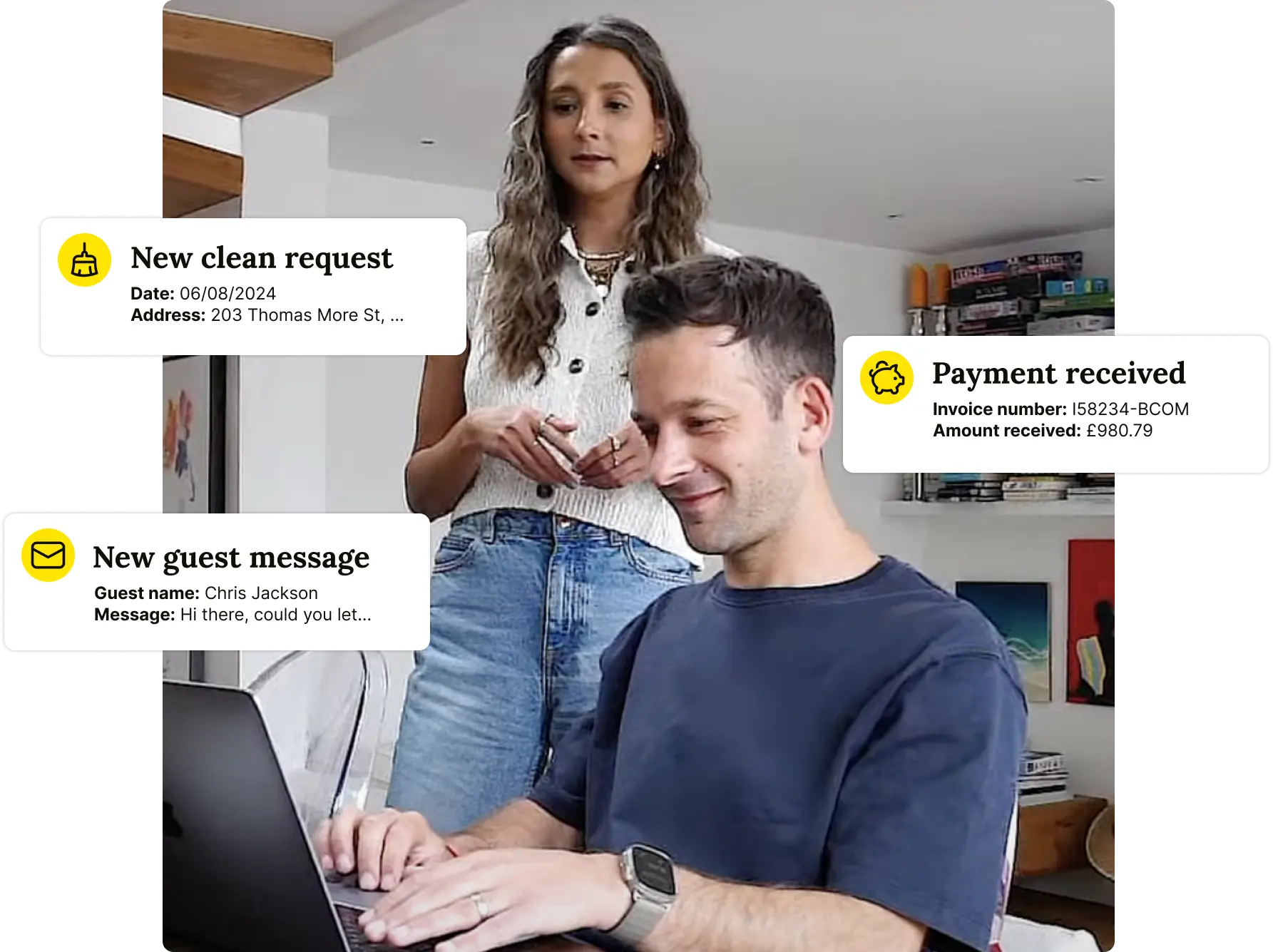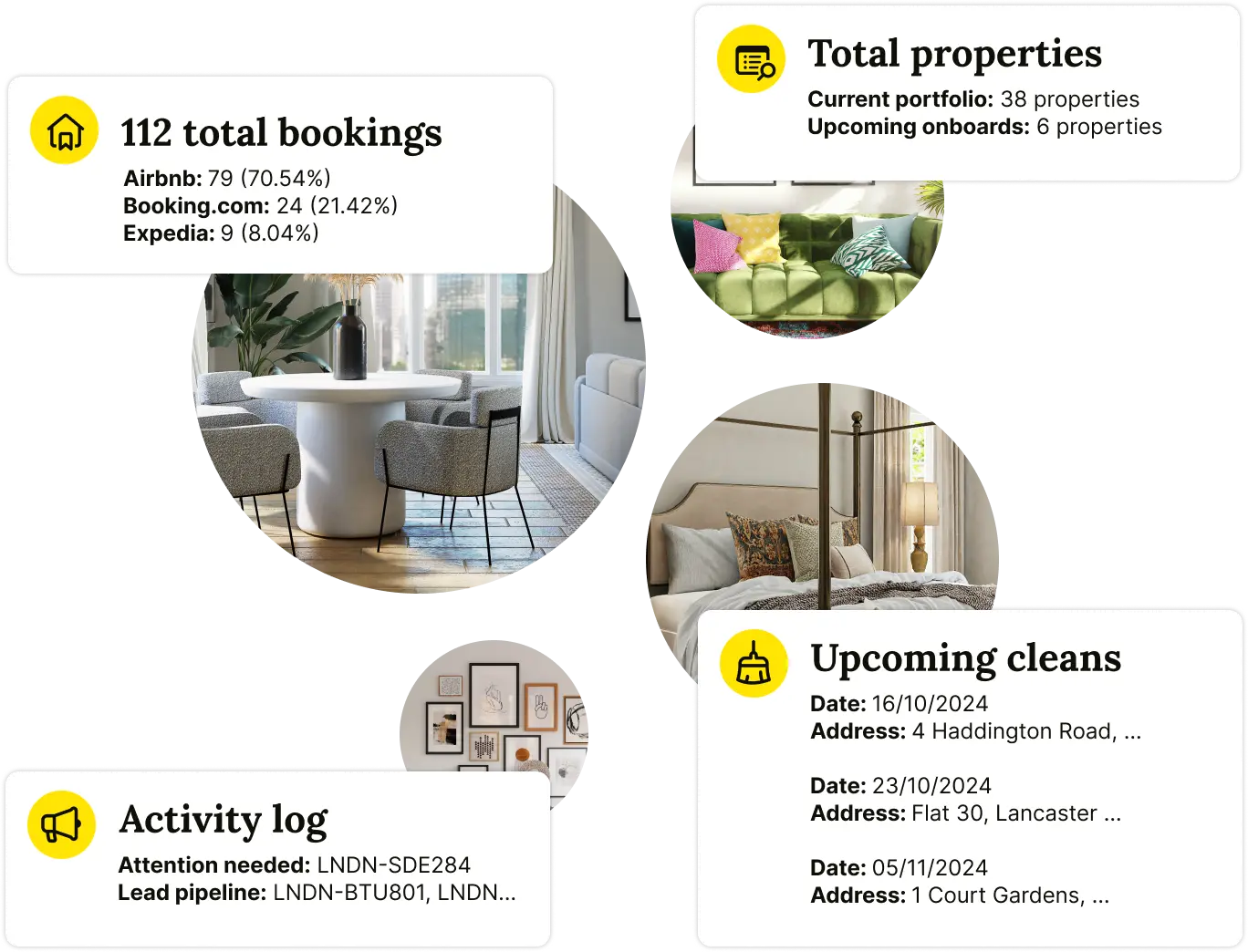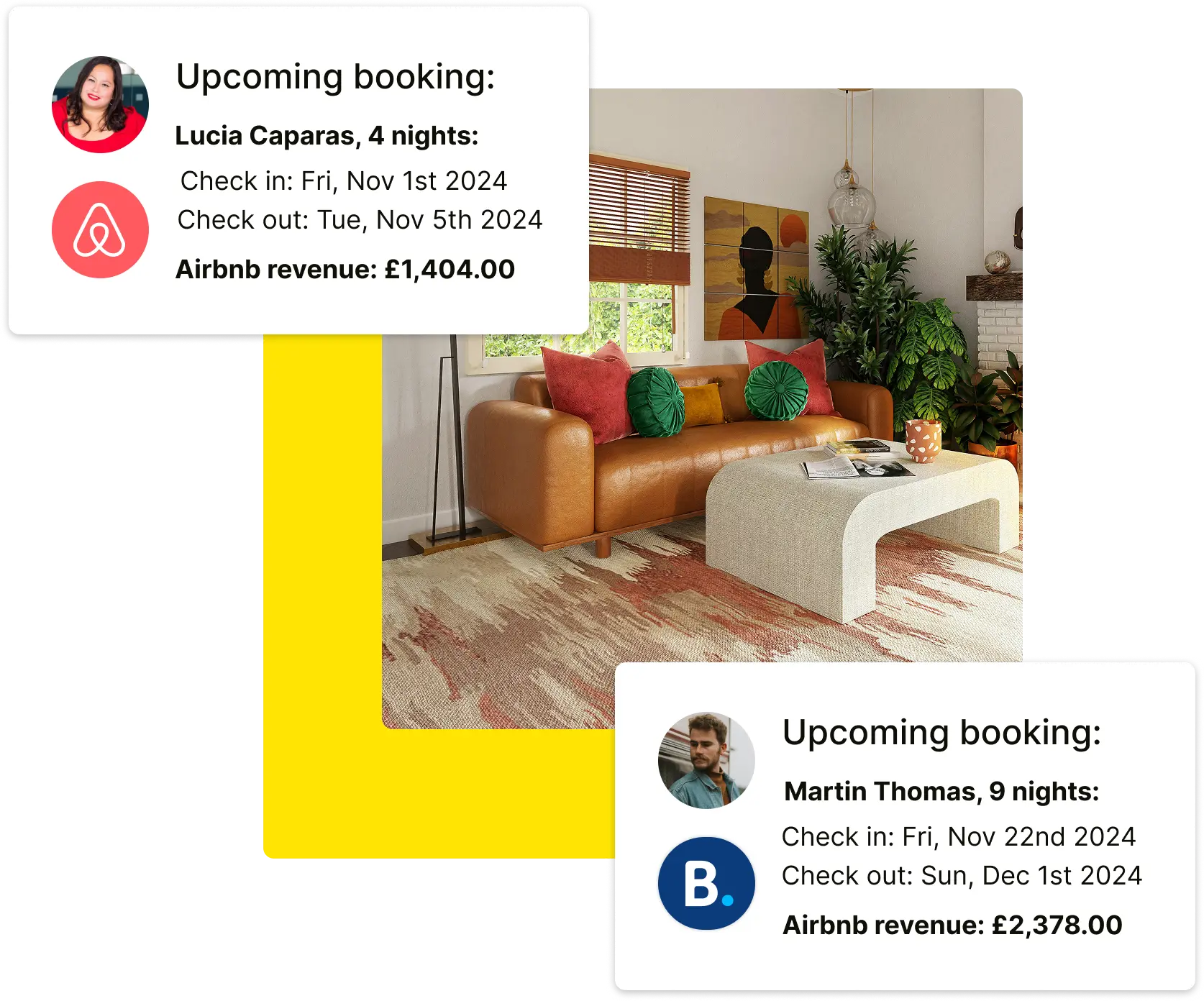Whether you're a seasoned host or just starting out, one of the most important metrics to track is your occupancy rate. After all, what good is a beautiful listing if it's not being enjoyed by guests?
Occupancy rates are the heartbeat of your Airbnb business, providing insight into how often your listing is being booked and how much revenue you can expect to earn. It's the difference between a thriving vacation rental and a stagnant property sitting vacant.
So, if you're ready to take your Airbnb game to the next level, buckle up and get ready to learn everything you need to know about occupancy rates. From seasonal trends to pricing strategies, we'll cover it all so that you can boost your occupancy rates and start earning more from your Airbnb listing. So, let's dive in and explore the world of Airbnb occupancy rates!
Table of Contents
What are Airbnb occupancy rates?
Airbnb occupancy rates refer to the percentage of time that an Airbnb listing is occupied by guests over a given period of time. This metric is commonly used by Airbnb hosts and investors to measure the performance of their rental property on the platform.
For example, if a host's Airbnb listing is occupied by guests for 20 days out of a 30-day month, the occupancy rate for that month would be 66.7%.
High occupancy rates are desirable for Airbnb hosts because they mean more bookings, more revenue, and a higher return on investment. However, it's important to note that occupancy rates should be balanced with pricing and other metrics to ensure that hosts are generating a profit and providing a quality experience for their guests.
Importance of occupancy rates for Airbnb hosts
Airbnb occupancy rates are important for hosts for several reasons:
Maximizing revenue: Higher occupancy rates mean more bookings, which leads to increased revenue for hosts. Hosts who can consistently maintain high occupancy rates are more likely to generate a steady income from their Airbnb listing.
Ensuring profitability: While high occupancy rates are important, hosts need to ensure that their pricing is competitive and covers all their expenses, such as cleaning, utilities, and maintenance. By monitoring occupancy rates, hosts can adjust pricing to ensure that they are profitable and not losing money.
Attracting future guests: Airbnb guests are more likely to book listings with higher occupancy rates, as this indicates that the listing is popular and well-liked by other guests. By maintaining high occupancy rates, hosts can attract more future guests and grow their business.
Improving search rankings: Airbnb's search algorithm takes into account several factors, including occupancy rates. Listings with high occupancy rates are more likely to appear at the top of search results, which can lead to more visibility and bookings for hosts.
Factors affecting Airbnb occupancy rates
Various factors affect how occupancy rates change. Here are six common factors that can affect your Airbnb occupancy rates.
1. Seasonality
The time of year can greatly impact occupancy rates, with peak travel seasons typically seeing higher occupancy rates. For example, beach destinations may see higher occupancy rates during the summer months, while ski destinations may see higher occupancy rates during the winter months.
2. Local events
Major events such as festivals, conferences, and sporting events can greatly impact occupancy rates in a specific location. For example, a city hosting a major music festival may see a spike in demand for Airbnb listings during that time.
3. Location
The location of an Airbnb listing can also impact occupancy rates. Listings in highly desirable or central locations may have higher occupancy rates than those in less desirable or remote locations.
4. Pricing
Pricing is a critical factor that can impact occupancy rates. If a listing is priced too high, it may deter potential guests and lead to lower occupancy rates. Conversely, if a listing is priced too low, it may attract more bookings but lead to lower revenue for the host.
5. Reviews and ratings
Positive reviews and ratings are crucial for maintaining high occupancy rates on Airbnb. Listings with low ratings or negative reviews may deter potential guests and lead to lower occupancy rates.
6. Listing description and photos
The quality of a listing's description and photos can also impact occupancy rates. Listings with well-written descriptions and high-quality photos are more likely to attract potential guests and lead to higher occupancy rates.
5 Strategies to increase Airbnb occupancy rates
1. Adjusting pricing
As mentioned earlier, pricing is a critical factor that can impact occupancy rates. Hosts can experiment with different pricing strategies, such as adjusting prices based on demand or offering discounts for longer stays.
2. Offering discounts
Offering discounts, such as early booking discounts or last-minute deals, can also help to attract more bookings and increase occupancy rates.
3. Improving listing quality
Improving the quality of a listing can also lead to higher occupancy rates. Hosts can update their listing description, photos, and amenities to make their listing more attractive to potential guests.
4. Enhancing customer service
Providing excellent customer service can help to build a positive reputation on Airbnb and lead to more bookings. Hosts can respond promptly to guest inquiries and feedback, and go above and beyond to ensure that guests have a great experience.
5. Utilizing social media and other marketing channels
Hosts can promote their listings on social media and other marketing channels to attract more potential guests. This can include sharing photos and information about the listing on social media, partnering with local businesses, or running targeted ads.
Conclusion
In conclusion, understanding and optimizing your Airbnb occupancy rates is key to running a successful and profitable vacation rental business. By taking into account factors such as seasonality, local events, location, pricing, reviews and ratings, and listing quality, hosts can make data-driven decisions to attract more bookings and maximize revenue.
But beyond the numbers, Airbnb occupancy rates represent the excitement and joy of sharing your home with travelers from all around the world. It's the feeling of knowing that your listing is a part of someone's cherished memories and experiences.
So, whether you're a full-time host or just looking to earn some extra income, remember that Airbnb occupancy rates are more than just a statistic - they're a reflection of the unique and vibrant community that is Airbnb. So go forth, create amazing guest experiences, and watch your occupancy rates soar!
🚀 Start & Scale Your Airbnb Business with Houst
Launch a profitable Airbnb business — without owning property.
Join Houst’s Airbnb Business Partnership Program to start, manage, and grow your short-term rental business. With expert marketing, automation tools, and dynamic pricing strategies, we help you maximize earnings and scale faster.

⭐ Rated 4.8/5 by 2,500+ Hosts

🚀 Build a Thriving Airbnb Business with Houst
Monetize short-term rentals without owning property. Our Airbnb Business Partnership Program helps you start, scale, and automate a profitable Airbnb business with smart pricing, automation, and expert support.
💡 No Property Needed
📈 Expert Growth Strategies
🤖 Automated Hosting Tools

⭐ Rated 4.8/5 by 2,500+ Hosts

🚀 Build & Grow Your Airbnb Business with Houst
Turn your expertise into a profitable Airbnb business — without owning property.
Join Houst’s Airbnb Business Partnership Program to start, manage, and scale with ease. Get expert support, automation tools, and smart pricing strategies to maximize earnings and grow faster.

⭐ Rated 4.8/5 by 2,500+ Hosts


.jpg)
.webp)
.webp)







.png)

.webp)
